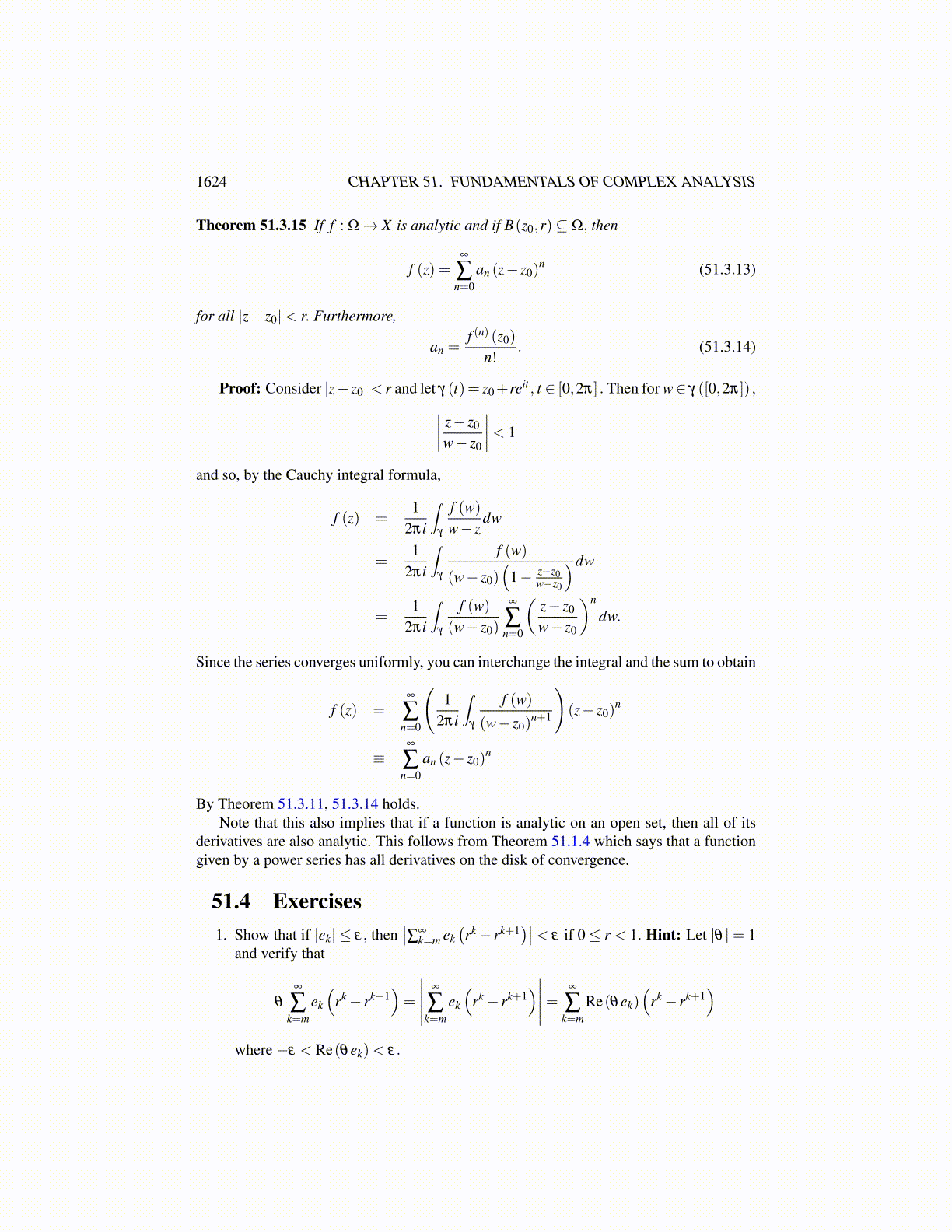
1624 CHAPTER 51. FUNDAMENTALS OF COMPLEX ANALYSIS
Now for all h sufficiently small, there exists a constant C independent of such h such that∣∣∣∣ 1(−w+ z+h)(−w+ z)
− 1(−w+ z)(−w+ z)
∣∣∣∣=
∣∣∣∣∣ h
(w− z−h)(w− z)2
∣∣∣∣∣≤C |h|
and so, the integrand converges uniformly as h→ 0 to
=f (w)
(w− z)2
Therefore, the limit as h→ 0 may be taken inside the integral to obtain
f ′ (z) =1
2πi
∫γ
f (w)
(w− z)2 dw.
Continuing in this way, yields 51.3.10.This is a very remarkable result. It shows the existence of one continuous derivative im-
plies the existence of all derivatives, in contrast to the theory of functions of a real variable.Actually, more than what is stated in the theorem was shown. The above proof establishesthe following corollary.
Corollary 51.3.12 Suppose f is continuous on ∂B(z0,r) and suppose that for all z ∈B(z0,r) ,
f (z) =1
2πi
∫γ
f (w)w− z
dw,
where γ (t) ≡ z0 + reit , t ∈ [0,2π] . Then f is analytic on B(z0,r) and in fact has infinitelymany derivatives on B(z0,r) .
Another application is the following lemma.
Lemma 51.3.13 Let γ (t) = z0+reit , for t ∈ [0,2π], suppose fn→ f uniformly on B(z0,r),and suppose
fn (z) =1
2πi
∫γ
fn (w)w− z
dw (51.3.11)
for z ∈ B(z0,r) . Then
f (z) =1
2πi
∫γ
f (w)w− z
dw, (51.3.12)
implying that f is analytic on B(z0,r) .
Proof: From 51.3.11 and the uniform convergence of fn to f on γ ([0,2π]) , the integralsin 51.3.11 converge to
12πi
∫γ
f (w)w− z
dw.